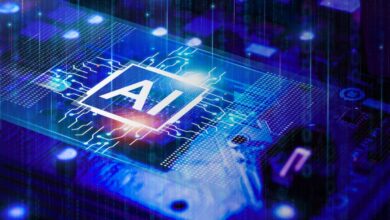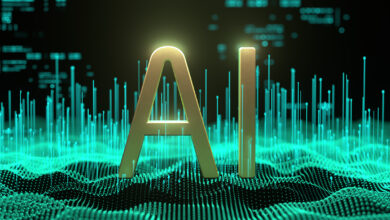When will artificial intelligence substitute human hydrographic activities?

Admittedly, the title of this column, formulated as a question, is deliberately provocative. The first reaction of those who read it and are interested in hydrography for professional reasons will probably be ‘never’, or ‘not during my career’. Some may simply say: ‘wrong question’. If you read primarily non-technically orientated media, you get the impression that this technology can provide answers to almost all questions – especially those that humanity has never asked before. This seems unlikely to me, and it is therefore worth first of all systematically discussing the possibilities and limitations of the applicability of this new technological wizardry in order to then assess its usability in hydrography. I think that both the question and the possible answers first need to be clarified as to which areas of hydrographic activities will be affected by the use of artificial intelligence.
One of the smartest conversations I have read on this topic so far was conducted by Lars Schiller, editor in chief of the German Hydrographic Society’s trade journal, with Alexander Reiterer from Fraunhofer IPM. You can either download the entire interview and have it translated by AI-driven software or follow my highly summarized interpretation here. One of Alexander Reiterer’s key statements for understanding the possibilities of AI is the following:
AI is trained for a clear task, by humans. This is a very complex process in which algorithms are used that enable self-learning. For certain tasks, the machine is clearly superior to humans after this learning process. For example, in very lengthy and complex pattern-recognition tasks involving vast amounts of data and parameters, the capacity of an AI can be huge with the computing power available today. We cannot expand and upgrade the human brain at will. And: AI does not get tired. It can reliably complete very strenuous tasks and make logically correct decisions after hours of computing work.
Modern hydrographic measuring systems – whether hydroacoustic systems, laser scanners or satellites – produce large quantities of high-precision measurement data with constantly increasing resolution. Today, it is often not the lack of data but the effort required to refine, normalize and convert the data into products that is the real bottleneck. Timely processing, quality assessment, visualization and ultimately interpretation require completely new methods of data analysis – precisely those that AI can offer. This is not just about the topography of the seabed, as hydrography is increasingly focusing on the construction and monitoring of industrial structures under water. There are many examples of AI applications for such purposes in the land area that can be transferred to the wet area. The maritime engineering sciences must take inspiration from the geodesists and surveyors in the land sector – and even better – work together with them. The interests of both areas meet at the coastline, whose course, which is constantly changing due to natural dynamics and human activities, should be able to be determined much more precisely from the various data sources with the help of AI methods.
Today, data processing in hydrography usually takes place downstream of the initial survey. AI could potentially change this if the initial pattern recognition and evaluation takes place during the ongoing measurement process, for example on an autonomously operating measuring device carrier that automatically adapts the mission sequence on this basis in a control loop, so to speak.
In my opinion, there is another future AI use case that does not directly concern the collection and processing of hydrographic information, but which will become relevant with the planned introduction of the IHO’s S-100 standardization concept. The plans for a future S-100 ECDIS foresee transmitting a variety of maritime geodata on board to make navigation safer and more effective. Let’s assume that all this data – electronic nautical charts, detailed bathymetry, water levels, currents and marine weather – is available on board everywhere and at all times. How can it then be analysed? Should this be simply by visualization in superimposed layers, or should intelligent AI-controlled filters identify hazards, derive route recommendations and control collision avoidance manoeuvres? And, following on from this thought, is autonomous shipping even conceivable without AI?
This issue of Hydro International focuses on the use of AI in hydrography and I am looking forward to learning about further fields of application for this powerful technical process that can improve our picture of undersea conditions and make them more complete, so that we can use them with caution for our purposes. To achieve this, the use of AI in our discipline must also find its way into the relevant training programmes for hydrographers because, without knowledgeable experts, hydrography will not be feasible even in a future supported by AI.
P.S.: Contrary to my usual approach, I wrote this article in my German mother tongue and had it translated by an AI-assisted online translation service. I also sent the question I asked at the beginning to ChatGPT. Here is the result:
As of my last knowledge update in January 2022, artificial intelligence (AI) has made significant advancements in various fields, including hydrography. Hydrographic activities involve the measurement and description of the physical features of bodies of water, including oceans, seas, lakes, and rivers. While AI has been employed in aspects of hydrographic data processing and analysis, the complete substitution of human hydrographic activities by AI is a complex and evolving process.
As of now, AI is often used to assist hydrographers by automating certain tasks such as data analysis, charting, and navigation. However, human expertise is still crucial for tasks that require judgment, decision-making, and the interpretation of complex situations.
The timeline for when AI might fully substitute human hydrographic activities is uncertain and depends on various factors, including technological advancements, regulatory frameworks, safety considerations, and societal acceptance. Additionally, certain tasks within hydrography may be more amenable to automation than others.
It’s essential to stay updated on the latest developments in AI and hydrography to assess how the integration of AI technologies progresses over time. Keep in mind that opinions on the pace and extent of AI substitution can vary, and the information provided here is based on the state of knowledge as of January 2022.
Not bad at all.



